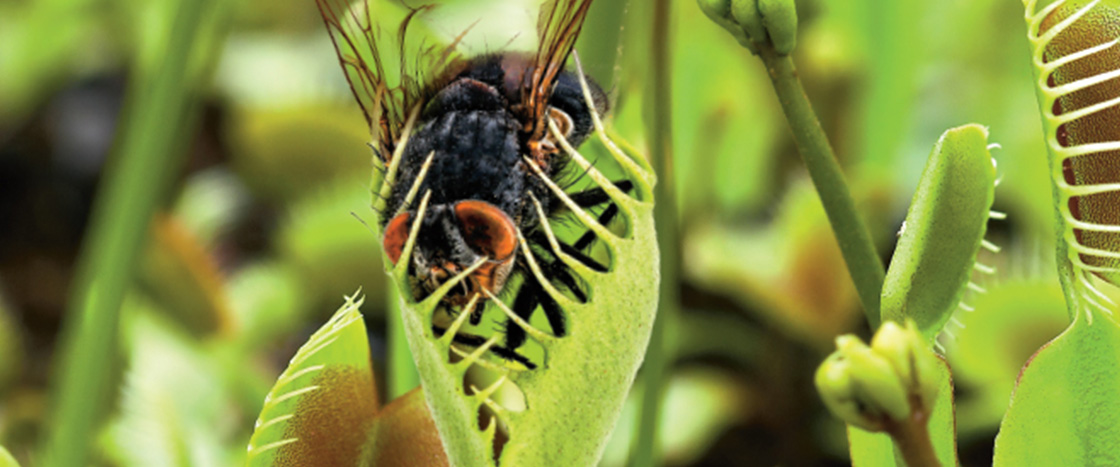A hungry fly tiptoes across a sweet-smelling leaf, looking for a meal. Suddenly the leaf closes around it! This insect has been caught by a carnivorous plant—one that attracts and kills animals for food. There are more than 600 species of these types of plants around the world.
Like all plants, carnivorous plants make their own food using photosynthesis. Powered by the sun’s energy, they combine water and carbon dioxide to make sugar. Plants also suck up nutrients from the soil through their roots.
But carnivorous plants grow in wetlands and bogs, where the soil is low in nutrients. To survive, they have developed the ability to feed on small animals. “It’s a way to get nutrients the soil can’t provide,” says Liane Cochran-Stafira. She’s an ecologist at Saint Xavier University in Chicago. Read on to learn about the traps these plants use to capture prey.
A hungry fly walks across a sweet-smelling leaf. The bug is looking for a meal. Suddenly, the leaf closes around the insect! It’s been caught by a carnivorous plant. The plant attracts and kills animals for food. More than 600 kinds of these plants exist around the world.
Like all plants, carnivorous plants make their own food through photosynthesis. Plants soak up the sun’s energy. They use it to combine water and carbon dioxide gas to make sugar. Plants’ roots also suck up nutrients from the soil.
But carnivorous plants grow in wetlands and bogs. There, the soil is low in nutrients. These plants survive by feeding on small animals. “It’s a way to get nutrients the soil can’t provide,” says Liane Cochran-Stafira. She’s an ecologist at Saint Xavier University in Chicago. Read on to learn about the traps these plants use to capture prey.

